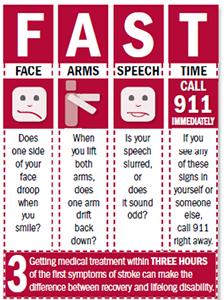I made these prayer cards for my RCIA group for my lesson on the Holy Spirit. I gave them out even though they’re just a first draft. They need to be properly set up for the printer but I’ll have them done by next year.
week 20/19
Leaders | Freedom | Diversity | Friendship
StandardI had the honor of attending the dedication and unveiling of the Harriet Tubman-William Seward Statue at the Schenectady, New York Public Library. I will post more about this event in the next few days as well as today’s related family adventure, but I need to say how much I learned from the speakers and how emotional I found this event. I feel blessed that I was able to attend.
Retreat
StandardI am on retreat all day today. I had planned to write a reflection and publish it later in the afternoon, but I thought it would be better for my own self-care if I posted this instead and concentrated on my day.
Take some time to smell the flowers and really look at them. Continue reading
Journalism: Where Do We Go From Here?
StandardIn recent days, as the Democratic field grows exponentially each day, we’ve seen a return to 2016 coverage by the media: Trump takes over every news cycle with new crazy, Bernie is in the lead, Buttigeig speaks eight languages, Elizabeth Warren’s unlikable, Kamala Harris is too hard, Amy Klobucher is too mean, ranch dressing, fried chicken, infer vs implied! Are the women ready? Too emotional? That’s almost sounds like a joke considering who we have in the Oval Office right now.
I saw a headline just this morning that Trump had a new nickname for Pete Buttigeig. How is that a headline for a news organization? Four reporters covered this story for the “news” organization! Have we learned nothing in the last two years?
Not to mention that news anchors and pundits continue to drown us in whataboutism, false equivalency, and but both sides.
Stroke Awareness Month – Risk Factors
StandardThere are many factors that go into whether or not you will have a stroke. The following list of risk factors, increased risk factors, and additional risk factors comes directly from the CDC (the Center for Disease Control).
- Race/ethnicity. African Americans have almost two times the risk of white people of having a first stroke. Hispanic Americans and American Indian/Alaska Natives are at greater risk than whites are for having a stroke but are at less risk than African Americans. African Americans and Hispanics are more likely than whites to die after having a stroke.
- Age. Stroke risk increases with age. Three-quarters of strokes occur in people ages 65 and older.
- Geography. The highest U.S. death rates from stroke occur in the southeastern United States.
- Gender. Men are more likely than women to have a stroke.
Certain lifestyle factors and conditions also increase the risk for stroke. The most important of these include:
- High blood pressure
- Diabetes
- Heart disease (such as atrial fibrillation)
- Previous stroke or transient ischemic attack
- Cigarette smoking
Additional risk factors include:
- Physical inactivity
- Overweight or obesity
- High cholesterol
- Sickle cell disease
- Drinking too much alcohol
- Family history of stroke
- Drug abuse
- Genetic conditions, such as blood-clotting or vascular disorders (for example, Factor V Leiden or CADASIL)
- Certain medications (such as hormonal birth control pills)
- Being pregnant
- Menopause
Lesser risk factors include:
- Head and neck injuries
- Recent viral or bacterial infections
Mental Health Monday – A Coping Skills Tool Box – Updated
StandardI discovered this on Tumblr, and wanted to share it with you since many of us need that little boost to get us through the day. I’ve posted this before, and because it’s so important you will probably see it again over the months. I like to bring it out in May during Mental Health Awareness Month and during my Mental Health Monday series. For this iteration, I’ve added one item in each category from my own Coping Skills Toolbox! I hope they are helpful. Good luck with your today!

My Personal Coping Skills Toolbox with a couple of samples. No list is ever complete and everyone’s toolbox will contain different skills. (c)2019




